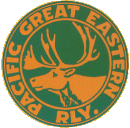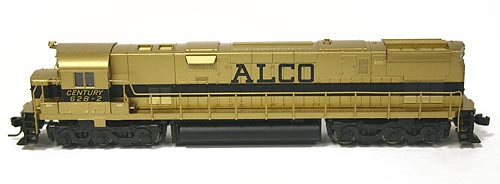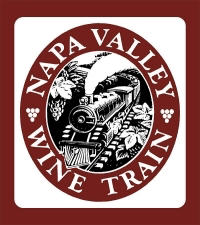Specific Item Information: Announced as 2nd run. Still in Pre-Order at certains stores. Release date unknown.
Model Information:  The drop-end 52'6" gondola was built in the 1950s for CN, CP and TH&B.
The drop-end 52'6" gondola was built in the 1950s for CN, CP and TH&B.
This tooling is owned by Prairie Shadows but actual production is performed via Rapido Trains in their Chinese factory.
It has seen only one run with CP, CB and TH&B road numbers; a second run was announced shortly after the first one in 2013, with more Canadian roadnames (Algoma Central, BC Rail and PGE) as well as a number of US railroads (Lehigh Valley, Conrail, Rio Grande, Western Maryland, Reading, NY Central), but has never been released so far.


It features:
 The drop-end 52'6" gondola was built in the 1950s for CN, CP and TH&B.
The drop-end 52'6" gondola was built in the 1950s for CN, CP and TH&B.This tooling is owned by Prairie Shadows but actual production is performed via Rapido Trains in their Chinese factory.
It has seen only one run with CP, CB and TH&B road numbers; a second run was announced shortly after the first one in 2013, with more Canadian roadnames (Algoma Central, BC Rail and PGE) as well as a number of US railroads (Lehigh Valley, Conrail, Rio Grande, Western Maryland, Reading, NY Central), but has never been released so far.


It features:
- Fully detailed sides and interior;
- Full underbody detail;
- Die-cast frame for optimum weight;
- Body mounted Micro-Trains couplers;
- Correct ride height;
- Accurate paint and lettering.
Prototype History: In US railroad terminology, a gondola is an open-topped rail vehicle used for transporting loose bulk materials. Because of their low side walls, gondolas are also suitable for the carriage of such high-density cargoes as steel plates, steel coils, and bulky items such as prefabricated sections of rail track. For weather-sensitive loads, these gondolas are often equipped with covers.
All-steel gondolas date back to the early part of the 20th century. However, most of the early ones were shorter and used 40' designs. The ubiquitous 50' steel gondola we see modeled so often today are typical of railcars produced since the end of the second world war. In the late 1940s, steel became once again readily available and new, longer gondolas were produced to transport material for America's booming economy. Generally, these 50 foot cars have a capacity of 70 tons and were actually 52'6" long. The first models of this design were produced by the Erie Railroad and the Greenville Steel Car Co, but nearly identical cars were produced by Pullman, ACF and Bethlehem.
All-steel gondolas date back to the early part of the 20th century. However, most of the early ones were shorter and used 40' designs. The ubiquitous 50' steel gondola we see modeled so often today are typical of railcars produced since the end of the second world war. In the late 1940s, steel became once again readily available and new, longer gondolas were produced to transport material for America's booming economy. Generally, these 50 foot cars have a capacity of 70 tons and were actually 52'6" long. The first models of this design were produced by the Erie Railroad and the Greenville Steel Car Co, but nearly identical cars were produced by Pullman, ACF and Bethlehem.
Road Name History: PGE launched in 1912 with a 12 mile line from North Vancouver, British Columbia to Horseshoe Bay where they picked up another 30 mile line reaching a point just north of Squamish. Six years later, the Province of British Columbia bought the railroad. By 1921, they had built north as far as Quesnel but that was it for the next 31 years. The south end of the line was abandoned in 1928.
In 1951, the Province pushed construction of the PGE north to Prince George in central B.C. and a connection with a Canadian National transcon line. This was the first physical connection with the North American rail network. Prior to that, interchange required car barges. In 1956, a rail link was finally completed to CN and CP in North Vancouver, finally closing the loop. In 1958, lines were built north from Prince George to Dawson Creek (and another CN connection.) In 1971, northward construction resumed to Fort St. John and finally Fort Nelson. This brought the mileage to 1,372 (putting it between Lehigh Valley and Iowa Chicago & Eastern in relative size.) The following year, 1972, the Pacific Great Eastern became the British Columbia Railway.
In 1951, the Province pushed construction of the PGE north to Prince George in central B.C. and a connection with a Canadian National transcon line. This was the first physical connection with the North American rail network. Prior to that, interchange required car barges. In 1956, a rail link was finally completed to CN and CP in North Vancouver, finally closing the loop. In 1958, lines were built north from Prince George to Dawson Creek (and another CN connection.) In 1971, northward construction resumed to Fort St. John and finally Fort Nelson. This brought the mileage to 1,372 (putting it between Lehigh Valley and Iowa Chicago & Eastern in relative size.) The following year, 1972, the Pacific Great Eastern became the British Columbia Railway.
Brand/Importer Information: We focus on quality not quantity. Fair prices and fantastic service are our top priority, but special runs and exclusive items are what set us apart!
It is my hope we can help you make the most of our wonderful hobby. - Jeff Arnold
It is my hope we can help you make the most of our wonderful hobby. - Jeff Arnold
Commissioner Information:  Prairie Shadows Model Railway Co. is a small model railway supply company located in Winnipeg, MB, and owned by Jeff Arnold. They pride themselves in providing solid service and fair prices.
Prairie Shadows Model Railway Co. is a small model railway supply company located in Winnipeg, MB, and owned by Jeff Arnold. They pride themselves in providing solid service and fair prices.
They commissioned several exclusive N scale models to Rapido Trains Inc.
They commissioned several exclusive N scale models to Rapido Trains Inc.
Item created by: Alain LM on 2018-06-03 04:31:17. Last edited by CNW400 on 2020-08-11 12:58:56
If you see errors or missing data in this entry, please feel free to log in and edit it. Anyone with a Gmail account can log in instantly.
If you see errors or missing data in this entry, please feel free to log in and edit it. Anyone with a Gmail account can log in instantly.











